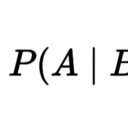Overexpression of Camellia sinensis H1 histone gene confers abiotic stress tolerance in transgenic tobacco.
Maneno muhimu
Kikemikali
CONCLUSIONS
Overexpression of CsHis in tobacco promoted chromatin condensation, but did not affect the phenotype. It also conferred tolerance to low-temperature, high-salinity, ABA, drought and oxidative stress in transgenic tobacco. H1 histone, as a major structural protein of higher-order chromatin, is associated with stress responses in plants. Here, we describe the functions of the Camellia sinensis H1 Histone gene (CsHis) to illustrate its roles in plant responses to stresses. Subcellular localization and prokaryotic expression assays showed that the CsHis protein is localized in the nucleus, and its molecular size is approximately 22.5 kD. The expression levels of CsHis in C. sinensis leaves under various conditions were investigated by qRT-PCR, and the results indicated that CsHis was strongly induced by various abiotic stresses such as low-temperature, high-salinity, ABA, drought and oxidative stress. Overexpression of CsHis in tobacco (Nicotiana tabacum) promoted chromatin condensation, while there were almost no changes in the growth and development of transgenic tobacco plants. Phylogenetic analysis showed that CsHis belongs to the H1C and H1D variants of H1 histones, which are stress-induced variants and not the key variants required for growth and development. Stress tolerance analysis indicated that the transgenic tobacco plants exhibited higher tolerance than the WT plants upon exposure to various abiotic stresses; the transgenic plants displayed reduced wilting and senescence and exhibited greater net photosynthetic rate (Pn), stomatal conductance (Gs) and maximal photochemical efficiency (Fv/Fm) values. All the above results suggest that CsHis is a stress-induced gene and that its overexpression improves the tolerance to various abiotic stresses in the transgenic tobacco plants, possibly through the maintenance of photosynthetic efficiency.





